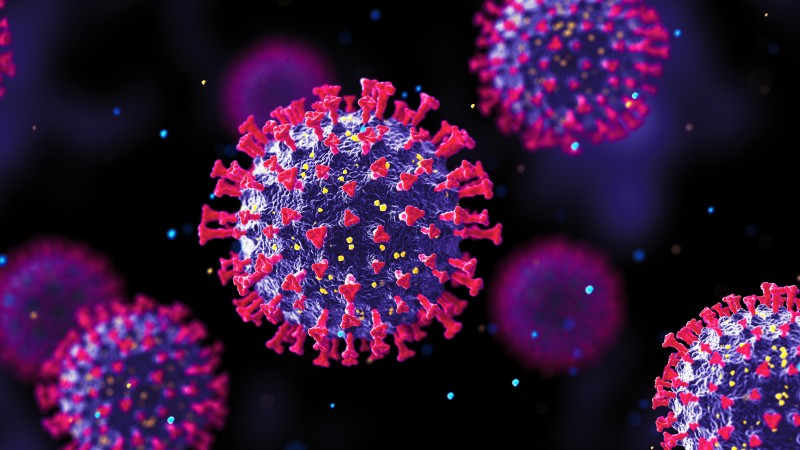The virus–diabetes link: Implications for clinicians and patients
MDlinx Mar 09, 2022
During the COVID-19 pandemic, individuals with diabetes have been particularly hard hit. SARS-CoV-2 infection causes a worsening of diabetes symptoms, and patients with diabetes are at increased odds of experiencing severe COVID-19 symptoms. Even more disconcerting is the discovery that SARS-CoV-2 infection can trigger onset of new diabetes.

A viral link with diabetes, however, extends past SARS-CoV-2—enteroviruses have been implicated, too. Clinicians need to recognize these environmental contributors to diabetes and screen patients appropriately. Patients who are made aware of their risks can be educated in preventive steps to reduce their chance of infection.
Linking COVID-19 to diabetes
In European pediatric patients, severe infection with COVID-19 has been correlated with an increase in the number of type 1 diabetes diagnoses, as well as severe diabetic ketoacidosis at the time of diagnosis. In addition, diabetes may be a repercussion of COVID-19 infection in adults, according to the research.
Publishing in MMWR, CDC researchers estimated the incidence of diabetes in individuals under age 18 who had a diagnosis of COVID-19, using data from two retrospective cohorts. They then compared this with the diabetes incidence in two groups of age- and sex-matched individuals: those who did not receive a COVID-19 diagnosis and those who had a pre-pandemic non-COVID-19 acute respiratory infection.
The authors found that participants with COVID-19 were at greater risk of a diabetes diagnosis more than 30 days after COVID-19 infection vs those without COVID-19 or those diagnosed with a pre-pandemic acute respiratory infection; non-SARS-CoV-2 respiratory infections were not linked to a higher diabetes risk.
For the two data sets, new diabetes diagnoses were 166% and 31% more common, respectively, in COVID-19 patients than in those without COVID-19 during the pandemic.
Diabetes was 116% more common in those with COVID-19 vs patients with acute respiratory infections diagnosed during the pre-pandemic period.
“Health care providers should screen for diabetes symptoms in persons aged < 18 years with a history of SARS-CoV-2 infection,” wrote the authors.
The symptoms to be aware of include polyurea, increased thirst/hunger, fatigue, weight loss, stomach pain, and nausea/vomiting. The study findings “underscore the importance of COVID-19 prevention among all age groups, including vaccination for all eligible children and adolescents, and chronic disease prevention and treatment,” they added.
According to the researchers, public health messages should stress the risk of diabetes that COVID-19 poses to younger patients as a consequence of COVID-19.
The mechanisms by which infection with SARS-CoV-2 could mediate type 1 or type 2 diabetes are varied and complex. COVID-19 infection may affect the organ systems in a manner that increases diabetes risk. For instance, it could attack the pancreatic cells expressing angiotensin-converting enzyme 2 receptors. Stress hyperglycemia secondary to a cytokine storm, along with changes in glucose metabolism due to infection, could play a role. It is also possible that exposure to SARS-CoV-2 could induce the pathogenic progression to diabetes from prediabetes, which is present in about one of five American adolescents.
Linking enterovirus and diabetes
Enterovirus infection has been scrutinized as a potential environmental contributor to type 1 diabetes. Of the 15 types of enteroviruses, seven are pathogenic to humans (ie, Enterovirus A-D and Rhinovirus A-C). Enteroviruses are able to infect pancreatic β cells in pancreatic islets via the coxsackie and adenovirus receptor (CAR). Such infections kill off β cells, thus reducing the expression of mRNA and insulin secretion, as well as interfering with the Golgi apparatus.
In 2011, a meta-analysis demonstrated an association between enterovirus infection and type 1 diabetes. Between 2012 and 2020, various studies have examined the topic with mixed results. In 2021, Chinese researchers performed an updated meta-analysis that suggested infection with enterovirus predicts type 1 diabetes.
Included studies demonstrating a relationship were drawn from Europe, Africa, Asia, Latin America, and Australia. A link was not demonstrated in the single study from North America. The association was supported by blood and tissue—but not stool—samples.
There is currently no vaccine to prevent non-polio enterovirus. Nevertheless, there are ways to curb the risk of enterovirus infection, according to the CDC. These measures include the following:
-
Adequate handwashing
-
Staying home when sick
-
Cleaning and disinfecting toys, doorknobs, and other surfaces
-
Avoiding touching of the nose, mouth, or eyes with dirty hands
-
Covering coughs and sneezes with tissues or sleeves but not hands.
What this means for you
Viruses, including SARS-CoV-2 and enterovirus, are correlated with diabetes pathogenesis. Physicians may want to screen for diabetes in patients with a relevant previous medical history of a virus infection. Encouraging measures to prevent these viral infections is important to reducing their impact on the development of diabetes.
Sources
-
Barrett CE. Risk for newly diagnosed diabetes >30 days after SARS-CoV-2 infection among persons aged <18 years — United States, March 1, 2020–June 28, 2021. MMWR. 2022;71(2):59-65.
-
Enterovirus D68. CDC. August 11, 2021.
-
Wang K, YE F, Chen Y, et al. Association between Enterovirus infection and type 1 diabetes risk: a meta-analysis of 38 case-control studies. Frontiers in Endocrinology. September 7, 2021.
-
Exclusive Write-ups & Webinars by KOLs
-
Daily Quiz by specialty
-
Paid Market Research Surveys
-
Case discussions, News & Journals' summaries